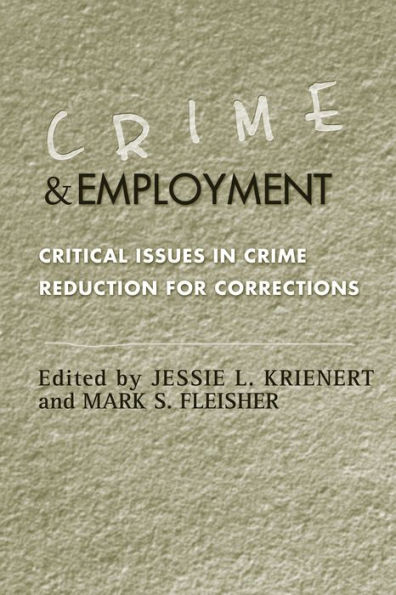Crime and Employment: Critical Issues in Crime Reduction for Corrections
Crime and Employment crystallizes the issue of work as a rehabilitative instrument in the modern correctional environment. It explores the effect of employment on crime and recidivism, with its implications for correctional programs and operations as well as for ex-offender reintegration into the community. The professionals contributing to this volume evaluate the effectiveness of employment in enabling offenders to desist from crime; the roles of prison versus community correctional services; the success of work programs for older versus younger offenders; the effect of industrial employment on reducing prison misconduct and post-release recidivism; the relevance of prior employment, substance abuse histories, poverty, and family contexts on subsequent inmate work programs; and the availability of quality employment, lawful lifestyles, and community vocational programs in sustaining economic rehabilitation of offenders. This book will be of great value to practitioners and policymakers alike in the areas of corrections, criminal justice, criminology, social problems, labor policy, social welfare, deviance and social control.
1112285751
Crime and Employment: Critical Issues in Crime Reduction for Corrections
Crime and Employment crystallizes the issue of work as a rehabilitative instrument in the modern correctional environment. It explores the effect of employment on crime and recidivism, with its implications for correctional programs and operations as well as for ex-offender reintegration into the community. The professionals contributing to this volume evaluate the effectiveness of employment in enabling offenders to desist from crime; the roles of prison versus community correctional services; the success of work programs for older versus younger offenders; the effect of industrial employment on reducing prison misconduct and post-release recidivism; the relevance of prior employment, substance abuse histories, poverty, and family contexts on subsequent inmate work programs; and the availability of quality employment, lawful lifestyles, and community vocational programs in sustaining economic rehabilitation of offenders. This book will be of great value to practitioners and policymakers alike in the areas of corrections, criminal justice, criminology, social problems, labor policy, social welfare, deviance and social control.
54.0
In Stock
5
1

Crime and Employment: Critical Issues in Crime Reduction for Corrections
240
Crime and Employment: Critical Issues in Crime Reduction for Corrections
240Paperback
$54.00
54.0
In Stock

Product Details
| ISBN-13: | 9780759104051 |
|---|---|
| Publisher: | AltaMira Press |
| Publication date: | 10/14/2003 |
| Pages: | 240 |
| Product dimensions: | 5.90(w) x 9.02(h) x 0.59(d) |
About the Author
From the B&N Reads Blog
